Nestled on the iconic shores of Myrtle Beach, Sharkey’s Oceanfront Restaurant offers a dining escapade that transcends the ordinary, blending the mesmerizing Atlantic sunsets with unmatched culinary expertise. A visit to Sharkey’s isn’t just about the food; it’s about creating memorable experiences against a backdrop of stunning ocean views and soothing coastal breezes.
The Magic of Dining by the Ocean
The allure of Sharkey’s is magnified by its prime location along the vibrant Myrtle Beach Boardwalk. As the sun dips below the horizon, the sky paints itself in hues of orange and purple, setting a spectacular scene for an evening meal. Dining at Sharkey’s allows guests to immerse themselves in this picturesque setting, where each meal is complemented by the rhythmic sounds of the waves and the beauty of the coastline stretching into the sunset.
Signature Dishes and Drinks
Sharkey’s menu is a testament to culinary diversity, featuring a range of dishes that cater to all palates. The restaurant is renowned for its fish tacos—flaky, seasoned fish wrapped in soft tortillas and topped with fresh salsa. For those with a penchant for something a bit more exotic, the coconut shrimp offers a sweet and crunchy delight, perfectly paired with a tangy marmalade sauce.
The drink menu at Sharkey’s is equally impressive, featuring an array of colorful cocktails that are as visually appealing as they are delicious. The Shark Attack, a frozen concoction of dark spiced rum and tropical flavors, is a favorite among guests looking to cool down with a refreshing beverage. For a more classic taste, the handcrafted margaritas, available in various flavors, provide a crisp complement to any meal.
From Appetizers to Entrees
Start your meal with a selection from the extensive appetizer menu. The fried calamari, light and crispy, served with a side of marinara, sets the stage for a flavor-filled evening. For a richer start, the blackened scallops offer a smoky depth, enhanced by the restaurant’s signature seasoning.
As you transition to the main courses, the entree selections invite you to explore the depths of oceanic flavors. The grilled salmon, drizzled with wasabi mayo and teriyaki glaze, offers a perfect balance of sweet and tangy, while the Sharkey’s seafood platter—a medley of fried oysters, popcorn shrimp, and hand-breaded flounder—showcases the best of the sea.
Perfect Pairings
Choosing the right drink to complement your meal can elevate the dining experience. Pair the spicy notes of the blackened dishes with the smooth, sweet notes of a peach bellini or a frozen daiquiri to enhance the flavors. Non-alcoholic options, such as the house-made lemonade, offer a refreshing alternative without compromising the complexity of the meal’s flavors.
Why Choose Sharkey’s for Sunset Dining?
Dining at Sharkey’s is an experience that goes beyond mere consumption. It’s about savoring each moment, from the initial sight of the dish as it’s presented against the sunset backdrop to the last bite of a perfectly prepared meal. The restaurant’s commitment to quality and atmosphere makes it a must-visit destination for anyone looking to enjoy a meal that is as visually stunning as it is delicious.
How to Make the Most of Your Visit
To fully enjoy the Sharkey’s experience, consider making reservations around sunset time for the best views. The friendly staff can help recommend dishes and drinks that align with your preferences, ensuring that your meal is personalized and memorable. Don’t rush—plan to savor each course as the day transitions into night, making your dining experience at Sharkey’s a highlight of your visit to Myrtle Beach.
Sharkey’s Oceanfront Restaurant invites you to embark on a culinary journey where the sunset is your backdrop, and each dish tells a story of flavor and craftsmanship. Whether you’re a local or a visitor, make Sharkey’s your next dining destination and discover why it’s not just a meal, but an experience that captivates all the senses.
Seafood lovers know that the key to enjoying the freshest, most delicious seafood is understanding what’s in season. The southeastern United States, with its extensive coastline, offers a rich variety of seafood throughout the year. This guide will walk you through what types of seafood to look for each season if you’re dining or cooking in the Southeast.
Spring
Shrimp: Spring marks the beginning of the shrimp season in the Southeast. You’ll find fresh shrimp easier during this time, perfect for light, springtime dishes.
Crawfish: Often at its peak in late spring, especially in areas closer to the Gulf of Mexico, crawfish are a regional favorite, often enjoyed at festive crawfish boils.
Soft Shell Crab: As crabs molt their old exoskeletons and grow new ones, they pass through a “soft shell” phase. This delicacy is highly prized and typically available from late spring through early summer.
Summer
Blue Crab: Summer is the peak season for blue crab, a staple in the Southeast, particularly famous for dishes like crab cakes and crab boils.
Snapper: This is also a prime time for snapper, especially red snapper, known for its firm texture and nutty flavor, making it ideal for grilling.
Mahi-Mahi: Commonly found in warmer waters, mahi-mahi is available and abundant during the summer months, perfect for a variety of dishes from tacos to grilled fillets.
Fall
Oysters: Fall marks the start of oyster season in the Southeast. Oysters are best harvested when the water is cooler, and they are often said to be tastier in months containing ‘r’.
Grouper: This is also a good time for grouper, a fish appreciated for its mild, yet distinct flavor and suitable for a wide range of recipes.
Flounder: Available during the fall, flounder is another versatile fish, ideal for frying, steaming, or stuffing.
Winter
Stone Crab: Known especially for their claws, stone crabs are harvested from October to May, making winter a prime time to enjoy this treat.
Sea Bass: This is the season for sea bass, a rich, white fish that goes well in hearty winter dishes.
Pompano: This fish, which is highly esteemed for its taste, is typically in season during the colder months.
Year-Round
Catfish: Widely farmed and popular in southern cuisine, catfish are generally available throughout the year.
Tilapia: Another commonly farmed fish, tilapia is a versatile and sustainable option, available all year round.
Conclusion
Understanding seafood seasons not only helps in making better choices for freshness and flavor but also supports sustainable fishing practices. Whether you’re buying from your local market or ordering at a restaurant, knowing what seafood is in season can enhance your culinary experiences. Remember, seasonal availability can vary by specific regions and due to changing environmental conditions, so it’s always a good idea to check with local sources. Enjoy the best of what the Southeast has to offer and savor each bite from the sea!
Experience the Season’s Best at Sharkey’s Oceanfront Restaurant: Whenever you find yourself in Myrtle Beach, SC, make sure to visit Sharkey’s Oceanfront Restaurant. We pride ourselves on serving the freshest, in-season seafood. From spring’s tender shrimp to crab legs perfect for any season, each dish is crafted to highlight the season’s finest offerings. Join us by the beautiful Atlantic coast for a dining experience where quality, flavor, and stunning ocean views meet. Don’t miss out on the best seasonal seafood in Myrtle Beach — visit Sharkey’s today!
Pairing the right cocktail with your seafood dish can transform a good meal into an unforgettable dining experience. Whether you’re enjoying a casual dinner by the beach or hosting an elegant seafood feast at home, understanding how to match cocktails with various types of seafood will allow you to enhance the flavors of both. Here’s your ultimate guide to the best cocktail pairings for different types of seafood.
Crisp Whites and Light, Flaky Fish
Seafood Type: Light and Flaky Fish Cocktail: Classic Mojito
Begin with something light, such as grilled or poached flaky fish, known for its delicate, buttery texture. Pair this with a classic Mojito. The freshness, minty notes, and splash of lime in the Mojito complement the subtle flavors of the fish, enhancing its natural sweetness without overwhelming the palate. This pairing is perfect for those who appreciate the lighter side of seafood.
Bold Flavors for Firm, Meaty Fish
Seafood Type: Firm, Meaty Fish Cocktail: Spicy Margarita
For those who favor bold flavors, a dish featuring blackened or grilled meaty fish is an excellent choice. Accompany this with a Spicy Margarita. The cocktail’s crisp tequila base and spicy undertones cut through the richness of the fish, balancing the heat and highlighting the robust seasoning.
Tropical Pairings for Shrimp and Other Shellfish
Seafood Type: Shrimp and Other Shellfish Cocktail: Piña Colada
Nothing says tropical dining like shrimp or mixed shellfish dishes paired with a creamy Piña Colada. The sweet and rich profile of the cocktail, laden with coconut cream and pineapple juice, offers a delightful contrast to the savory and aromatic flavors of the shellfish, making each bite a luxurious indulgence.
Elegant Combinations for Crab and Lobster
Seafood Type: Crab and Lobster Cocktail: Champagne Cocktail
Opt for a touch of elegance with dishes featuring crab or lobster, accompanied by a sophisticated Champagne Cocktail. The bubbly texture and crispness of the champagne enhance the rich, tender flesh of the seafood, elevating the entire dining experience.
Citrusy Delights for Fried Seafood Favorites
Seafood Type: Fried Seafood Favorites Cocktail: Lemon Drop Martini
A plate of fried seafood, with its crispy texture and light flavor, pairs wonderfully with the sharp, sweet-and-sour profile of a Lemon Drop Martini. The cocktail’s strong citrus notes cut through the fried exterior, cleansing the palate and complementing the mild taste of the seafood.
Conclusion: Mixing and Matching for the Perfect Meal
Mastering the art of pairing cocktails with seafood is all about balancing flavors to enhance the dining experience. Whether you are dining out or creating these pairings at home, experimenting with different combinations can lead to delightful discoveries. Next time you plan a seafood meal, consider these pairing suggestions to elevate your dining experience, making it memorable with every sip and bite. Cheers to a delicious adventure in flavor!
Visit Sharkey’s Oceanfront Restaurant: Next time you’re in Myrtle Beach, enhance your dining experience by visiting Sharkey’s Oceanfront Restaurant. Enjoy our expertly crafted cocktails and exquisite seafood in a stunning beachfront setting. Whether you’re looking for a romantic evening or a family dinner, Sharkey’s offers the perfect blend of ambiance and flavor. Don’t just take our word for it—come and see for yourself why we’re a beloved spot for both locals and visitors alike!
Pairing the right drink with seafood can transform a good meal into an extraordinary culinary experience. Whether you’re enjoying a simple grilled fish or indulging in a decadent seafood platter, the perfect beverage can elevate your dish by enhancing its flavors and textures. This guide will walk you through the essentials of pairing seafood with wines, beers, and cocktails, ensuring that every bite is as delightful as the last.
The Basics of Seafood and Drink Pairing
Understanding the basic flavor profiles of seafood is crucial in selecting the right beverage. Generally, seafood can be categorized by its richness and texture, ranging from light and flaky fish to rich and creamy shellfish. The pairing principle is simple: aim to match the intensity of the food with the drink, ensuring one does not overpower the other.
Pairing Wine with Seafood
Light Fish: Delicate fish like tilapia, flounder, and sole pair wonderfully with light white wines. Pinot Grigio and Sauvignon Blanc are excellent choices as their crisp and fresh flavors complement the subtlety of the fish without overwhelming it.
Rich Fish: For oilier, richer fish such as salmon or tuna, opt for fuller-bodied whites like Chardonnay or Viognier. These wines balance the richness of the fish with their robust flavors and creamy textures.
Shellfish: When it comes to shellfish like oysters, clams, and mussels, nothing beats a glass of sparkling wine. Prosecco or Champagne not only adds a touch of elegance but the bubbles and crispness cut through the seafood’s richness, enhancing its natural flavors.
Beer and Seafood Combinations
Ale with Fried Seafood: The caramel notes of ales, such as amber or brown ale, complement the golden fried crust of fish and chips or battered shrimp, balancing the greasiness with their sweet undertones.
Lagers with Grilled Seafood: The clean, crisp taste of a light lager works wonderfully with grilled seafood. The subtle char and smokiness of the grill are enhanced by the refreshing finish of the lager.
Stouts with Rich Shellfish: The deep, roasted flavors of stouts or porter beers are a surprising but excellent match for luxurious seafood like lobster or crab, offering a robust contrast to the creamy textures.
Crafting Seafood Cocktails
Citrus Cocktails for Light Seafood: A zesty margarita or a lemon-based cocktail can add a bright pop to light fish dishes, echoing the traditional squeeze of a lemon wedge that often accompanies seafood.
Herb-Infused Cocktails for Herbal Dishes: For seafood seasoned with herbs, try a cocktail that mirrors these elements. A rosemary gin fizz or a basil smash can bring out the aromatic freshness of the herbs used in the dish.
Spicy Cocktails for Bold Flavors: For spiced or blackened seafood, a cocktail with a kick, such as a Bloody Mary or a spicy jalapeño margarita, can stand up to the intensity and enhance the overall flavor profile.
Non-Alcoholic Options
Not everyone drinks alcohol, but that doesn’t mean missing out on creative pairings. Sparkling water with a twist of citrus can cleanse the palate between bites, while mild herbal teas like chamomile or mint can subtly complement the flavors of delicate seafood without overwhelming them.
Themed Seafood Dinner Ideas
Why not throw a themed dinner party centered around these pairings? Consider a Mediterranean night featuring seafood paella paired with sangria, or a summer seafood feast with various grilled fish and a selection of light beers and white wines.
Tips for Experimenting at Home
The best way to discover your favorite pairings is through experimentation. Try different combinations to see what works best for your palate. Remember, the best pairing is one that you enjoy the most, regardless of traditional guidelines.
Conclusion
Mastering the art of pairing drinks with seafood will surely enhance your dining experience, whether you’re hosting a dinner party or enjoying a quiet meal by the sea. Next time you’re planning a seafood dish, consider these pairing suggestions to elevate your meal to the next level. And if you’re dining out, don’t hesitate to ask for pairing recommendations—they might lead you to discover your new favorite combination!
Experience the Perfect Pairing at Sharkey’s: After exploring the art of drink and seafood pairing, why not put your knowledge to the test at Sharkey’s? Located right on the Myrtle Beach Boardwalk, Sharkey’s offers a stunning array of seafood dishes perfectly complemented by our expertly curated selection of wines, beers, and cocktails. Whether you’re craving a light, citrusy cocktail with our grilled fish or a bold stout to go with our rich shellfish platter, Sharkey’s has the perfect pairing waiting for you. Visit us to savor the flavors and views that only Sharkey’s can offer. Book your table today and elevate your dining experience to a memorable oceanfront adventure.
Coastal cuisine is a tapestry woven with the threads of geography, culture, and history, each strand imbued with the essence of the ocean. In regions where the land meets the sea, food is not just sustenance; it’s a narrative of the people and the environment, shaped by the rhythm of the tides and the bounty beneath the waves. This article delves into the historical influences that have crafted coastal cuisine, highlighting its evolution from traditional practices to its current incarnations, and celebrating its cultural significance.
The Roots of Coastal Cuisine
The journey of coastal cuisine in many regions begins with the indigenous populations and early settlers, whose diets were heavily reliant on the sea. Traditional fishing techniques such as line fishing, netting, and spearfishing were more than food procurement methods; they were harmonious interactions with the marine ecosystem. These methods dictated the types of seafood that featured in the local diet, leading to the development of region-specific dishes that are celebrated to this day.
For instance, the early coastal dishes often included simple, broiled seafood, seasoned with whatever local herbs were available, and sometimes paired with fruits or vegetables that grew near the shorelines. Such dishes were not only nourishing but also a reflection of the environment from which they sprung.
The Evolution of Coastal Cuisine
As communities grew and interactions increased among different cultures, coastal cuisine began to absorb influences from afar. The introduction of spices through trade routes added new flavors to traditional recipes, transforming simple seafood dishes into rich, complex culinary experiences. Technological advancements in fishing and cooking equipment also expanded the variety of seafood dishes, making techniques like deep-frying and smoking popular.
Modern interpretations of these dishes continue to evolve in restaurants like Sharkey’s, where traditional recipes are infused with contemporary techniques and global flavors, offering a modern dining experience while staying rooted in historical authenticity.
Signature Coastal Dishes and Their Stories
Each coastal region boasts signature dishes that tell stories of its history and people. In Myrtle Beach, dishes like shrimp and grits or fried catfish hold a special place in the culinary landscape. These dishes are steeped in tradition and local flavor, often passed down through generations.
Ingredients from the Sea
The types of seafood that populate coastal menus are as varied as the oceans themselves. From shellfish like oysters and clams to various kinds of fish such as snapper and mackerel, each ingredient tells a part of the region’s culinary story. Sharkey’s commitment to using locally sourced seafood not only supports the local fishing industry but also ensures that diners receive the freshest, most flavorful dishes.
Sustainability is a crucial consideration in contemporary coastal cuisine. Practices like sustainable fishing and responsible aquaculture are vital for preserving marine biodiversity and ensuring that future generations can also enjoy the gifts of the sea.
Coastal Cuisine in Festivals and Celebrations
Coastal cuisine plays a central role in local festivals and community celebrations, often serving as a focal point for gatherings. In Myrtle Beach, seafood festivals not only showcase the region’s rich array of seafood but also bring people together in celebration of shared heritage and culinary traditions.
Preserving Coastal Culinary Heritage
Educational efforts play a significant role in preserving the culinary heritage of coastal communities. Sharkey’s engages in these efforts by hosting cooking demonstrations and participating in local food expos. By educating both locals and tourists about the history and techniques of coastal cuisine, Sharkey’s helps keep the culinary traditions alive.
The Future of Coastal Cuisine
Looking forward, coastal cuisine is set to incorporate more innovative trends while facing challenges such as climate change and overfishing. The adaptability of coastal communities and restaurants like Sharkey’s will be crucial in navigating these challenges while continuing to offer culinary delights.
We invite everyone to explore the rich flavors and storied history of coastal cuisine. Whether it’s dining at Sharkey’s, participating in local food festivals, or simply cooking a traditional seafood dish at home, there’s a multitude of ways to celebrate and preserve this vibrant culinary tradition.
Myrtle Beach, known for its stunning coastline and vibrant tourist scene, offers a plethora of dining experiences that cater to every palate. Among these, oceanfront dining stands out, providing not just a meal, but a multisensory experience that touches the soul. Nestled on the Myrtle Beach Boardwalk, Sharkey’s epitomizes the pinnacle of oceanfront dining, blending exquisite culinary creations with breathtaking views.
The Allure of Oceanfront Dining
Dining by the ocean is not merely about eating; it’s an experience that engages all senses. The rhythmic lapping of the waves, the salty breeze, and the expansive views create a backdrop that enhances every meal. Psychologically, proximity to water can significantly reduce stress and improve mental clarity and well-being. This serene environment makes oceanfront dining in Myrtle Beach not just enjoyable but rejuvenating.
At Sharkey’s, every table offers a view of the Atlantic Ocean, turning a simple dinner into an unforgettable experience. Whether it’s witnessing the sun dipping below the horizon during a romantic dinner or feeling the morning breeze during a brunch, the setting at Sharkey’s is as much a part of the dining experience as the food itself.
Sharkey’s Unique Oceanfront Appeal
Sharkey’s boasts a prime location on the Myrtle Beach Boardwalk, making it a favorite among both locals and tourists. The restaurant’s design maximizes its oceanfront locale, featuring open, airy spaces and a decor that reflects the natural beauty of its surroundings. Nautical themes and tasteful maritime decor invite diners to immerse themselves fully in the coastal experience.
The ambiance at Sharkey’s is carefully curated to complement the natural setting. Outdoor seating is available to bring diners even closer to the ocean, while the gentle lighting and soft music in the evenings ensure a relaxed dining atmosphere. This attention to detail in creating the perfect ambiance has made Sharkey’s a landmark for those seeking the quintessential Myrtle Beach dining experience.
Culinary Delights at Sharkey’s
Sharkey’s is renowned for its commitment to fresh, locally sourced seafood, which is the cornerstone of its menu. Dishes are crafted to highlight the natural flavors of the ocean, with chefs focusing on simplicity and elegance. From shrimp and grits to freshly caught grouper, the menu at Sharkey’s is a testament to the rich seafood traditions of Myrtle Beach.
Signature dishes like the Sharkey’s Seafood Platter and the Grilled Mahi Mahi have become favorites, drawing praise for their flavor and presentation. The menu also adapts with the seasons, incorporating the freshest ingredients available locally. This commitment to quality ensures that every dish served is not only delicious but also a true representation of local cuisine.
Sharkey’s Role in Myrtle Beach’s Dining Scene
Sharkey’s doesn’t just serve food; it serves a cultural experience that is deeply rooted in the Myrtle Beach community. The restaurant is actively involved in the local culinary scene, participating in seafood festivals and culinary competitions. These events serve as a platform for Sharkey’s to showcase its culinary expertise while contributing to the area’s vibrant food culture.
Moreover, Sharkey’s is committed to sustainability, recognizing the importance of preserving the marine environments that are so vital to their cuisine. The restaurant works with local suppliers who adhere to responsible fishing and farming practices, ensuring that the seafood served is not only fresh but also ethically sourced.
What Makes Sharkey’s Ideal for Every Occasion
Whether it’s a casual lunch, a romantic dinner, or a special celebration, Sharkey’s offers a versatile dining experience. The restaurant’s layout and services are designed to cater to a wide range of events. Private dining options are available for those looking to host special events, with customized menus to suit every occasion.
Inviting Guests to Sharkey’s
We invite you to discover why Sharkey’s is not just a meal, but a journey that captures the essence of Myrtle Beach. Experience first-hand the exquisite blend of flavor, scenery, and ambiance that makes Sharkey’s a jewel in the crown of Myrtle Beach’s dining scene. Book your table today and transform your dining experience into an unforgettable oceanfront adventure.
Sharkey’s is more than a restaurant; it’s a destination that promises a perfect blend of culinary delight and aesthetic pleasure, making every visit memorable. Whether you’re looking for a place to relax and enjoy the beauty of the ocean or to indulge in some of the finest seafood Myrtle Beach has to offer, Sharkey’s welcomes you to join us on this delightful culinary journey.
The Myrtle Beach area, renowned for its stunning coastlines and vibrant tourist scene, harbors a deep-seated legacy rooted in seafood. This culinary journey stretches back over centuries, shaped by the ocean’s bounty and the local community’s innovation. At Sharkey’s, we are proud to contribute to this rich history, blending traditional methods with modern culinary practices to delight every palate that walks through our doors.
The Origins of Myrtle Beach’s Seafood Industry
Seafood has been integral to Myrtle Beach since the area’s earliest days. Originally inhabited by indigenous tribes who fished the local waters, Myrtle Beach’s seafood legacy began with simple, sustainable fishing methods. These early techniques, which included line fishing and the use of small nets, were not only practical but also deeply respectful of the ocean’s resources.
As European settlers arrived and the area began to develop in the 18th and 19th centuries, the fishing industry grew. The introduction of larger nets and the construction of piers allowed for bigger hauls. These advancements helped establish Myrtle Beach not just as a recreational area but as a burgeoning hub for seafood that supplied both local and distant markets.
Key Milestones in the Evolution of Seafood Cuisine
The evolution of seafood cuisine in Myrtle Beach has been marked by both local and global influences. In the early 20th century, as Myrtle Beach became a tourist destination, the local cuisine began to reflect a more diverse palette. Seafood dishes were infused with flavors brought by visitors and new residents from various parts of the world.
One significant milestone was the introduction of Calabash-style seafood in the mid-20th century. Known for its light, fried preparations, it became synonymous with Myrtle Beach and remains a beloved style. The area also saw a rise in seafood festivals and cook-offs, which celebrated the local catch and fostered a communal spirit around seafood cuisine.
Sharkey’s Role in Preserving and Innovating Seafood Traditions
At Sharkey’s, we take immense pride in our role as custodians of Myrtle Beach’s seafood heritage. Our menu is a tribute to both the traditional and the innovative, offering dishes that are rooted in local history yet excited by contemporary flavors. We are committed to preparing seafood that respects time-honored methods while incorporating modern culinary trends such as fusion flavors and sustainable sourcing practices.
Sharkey’s also actively participates in local seafood festivals, showcasing our signature dishes and promoting Myrtle Beach’s seafood through interactive events and community engagement. This not only helps in preserving the local culinary culture but also ensures its evolution, keeping the traditions alive and relevant for new generations.
The Cultural Impact of Seafood in Myrtle Beach
The impact of seafood on Myrtle Beach’s culture cannot be overstated. For locals, seafood is more than just sustenance; it is a cornerstone of community gatherings, celebrations, and traditions. Family-owned seafood joints, many of which have been around for decades, serve as landmarks and meeting spots, fostering connections over shared meals.
At Sharkey’s, we continue this tradition by hosting seafood-centric events that bring together locals and tourists. These gatherings are not just about food; they are celebrations of Myrtle Beach’s culture and community spirit.
Sustainability and the Future
Looking forward, sustainability stands at the forefront of the seafood industry. At Sharkey’s, our commitment to sustainable practices is unwavering. We source our seafood responsibly, ensuring that our delicious dishes can be enjoyed for generations to come. We also educate our patrons about the importance of sustainability, hoping to spread awareness and encourage responsible consumption.
The future of seafood in Myrtle Beach looks promising, with innovations in aquaculture and sustainable fishing practices paving the way for a balance between tradition and environmental stewardship. Sharkey’s is excited to be a part of this future, continuing to serve as a bridge between the rich past of local seafood and its sustainable future.
Inviting Guests to Experience the Legacy
We invite you to experience the legacy of seafood at Sharkey’s. Whether it’s enjoying a classic fish dish that traces back generations or sampling innovative seafood creations that reflect modern culinary trends, Sharkey’s offers a deep dive into the flavorful history of Myrtle Beach. Try our specialties and see how we marry the old with the new, all while enjoying the scenic beauty of our oceanfront location.
Every meal at Sharkey’s is more than just dining—it’s a step into the storied culinary scene of Myrtle Beach, seasoned with history, community, and a commitment to the future. Join us for a meal and become part of this continuing story.
Coastal cuisine embodies more than just a regional diet; it represents a culinary tradition sculpted by the proximity and bounty of the sea. This cuisine features vibrant flavors that come from direct access to fresh seafood, the distinct tang of sea salt, and the nutrient-rich profiles of various seaweeds. From the chilly waters of the North Atlantic to the warm currents of the Pacific, each coastal region around the globe brings its unique flavor to the table, influenced heavily by its relationship with the ocean.
The Bounty of the Sea: Fresh Seafood
One of the most direct influences the ocean has on local cuisine is the availability of fresh seafood. Coastal communities have historically been built around fishing as a major food source and economic activity. This proximity to the ocean allows chefs and home cooks alike to incorporate fish and shellfish that are fresher and thus more flavorful and nutritious than those available inland. Dishes like the clam chowder of New England, the bouillabaisse of Provence in France, and sushi from Japan highlight how integral fresh seafood is to coastal culinary identities. Each dish not only provides a taste profile unique to its environment but also tells the story of the culture and its people.
Sea Salt: A Pinch of the Ocean
Sea salt is another gift from the ocean that significantly enhances coastal cuisine. Unlike mined salt, sea salt is harvested through the evaporation of seawater, often in large, shallow ponds along coastlines. This process imparts unique minerals and flavors found only in specific bodies of water. Gourmet salts like fleur de sel from France or Maldon sea salt from England offer subtle taste differences that can define and elevate a dish. The use of local sea salt not only adds depth to the food but also connects a meal to its geographical and cultural origins.
Seaweed: The Underwater Garden
Seaweed plays a versatile role in coastal cuisines, providing a source of intense umami flavors and a host of nutritional benefits. In Asian countries, particularly Japan, seaweed varieties like nori, kombu, and wakame are staples, used in everything from soups to sushi. In Wales, laverbread—a dish made from seaweed—is a traditional delicacy. These underwater plants are rich in iodine, calcium, and other minerals, making them a healthful addition to any diet. Modern chefs around the world are now exploring the potential of seaweed, using it in salads, stews, and even as seasoning agents.
The Ocean’s Influence on Cooking Techniques and Traditions
The influence of the ocean extends beyond ingredients to affect cooking methods and food preservation techniques. In coastal regions, grilling and steaming seafood are preferred methods that preserve the delicate flavors of fresh catch. The humid, salt-rich air can also influence food preservation processes, such as curing fish. Traditional techniques like the Hawaiian luau or New England clam bake utilize local ingredients and the natural environment, including seawater and beach sand, to cook food, highlighting a deep connection between culinary practices and the ocean.
Sustainability and the Future of Coastal Cuisine
As coastal populations grow and global fish stocks vary, sustainability in coastal cuisine becomes increasingly crucial. Overfishing and ocean pollution pose significant threats to the traditional diets of many coastal communities. Emphasizing sustainable fishing practices and responsible seafood consumption can help preserve these culinary traditions for future generations. Many coastal chefs now actively promote sustainable seafood choices, influencing both local and global markets and helping diners make environmentally friendly choices.
The Global Palette: Coastal Cuisine Around the World
Coastal cuisine, while locally distinct, shares common threads worldwide. For instance, ceviche from Peru, cured with locally sourced citrus and seafood, shares its basic culinary principle with carpaccio from Italy. These dishes, though geographically and culturally apart, underscore the universal human reliance on and respect for the sea. Such culinary cross-connections invite a broader understanding and appreciation of how oceans shape human food traditions across cultures.
Bringing Coastal Flavors Inland
For those who live away from the coast but wish to recreate the essence of the sea, modern logistics and culinary innovations make it easier than ever. Many inland restaurants now feature coastal dishes made with sustainably sourced seafood shipped under optimal conditions. Furthermore, ingredients like sea salt and dried seaweed are readily available in supermarkets worldwide, allowing home cooks to experiment with coastal flavors in their kitchens.
Sharpening our culinary practices not only honors these traditions but also ensures they endure. Encouraging sustainable practices, exploring the richness of the ocean’s bounty, and understanding the cultural significance of what we eat, help keep the legacy of coastal cuisine vibrant and vital.
Every meal, particularly those enjoyed close to the sea, is an opportunity to connect with the environment and community in a meaningful way. Whether dining on a local delicacy at a seaside restaurant or preparing a seafood feast at home with globally sourced ingredients, the flavors of the ocean offer a profound reminder of nature’s generosity and the importance of preserving it.

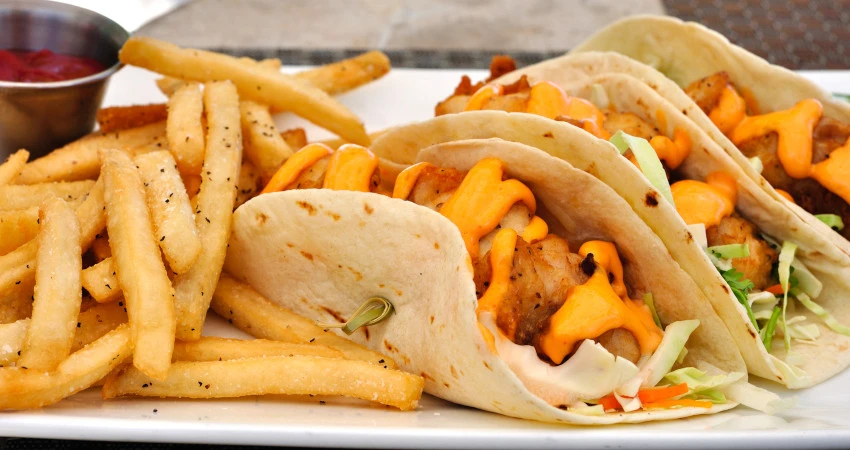
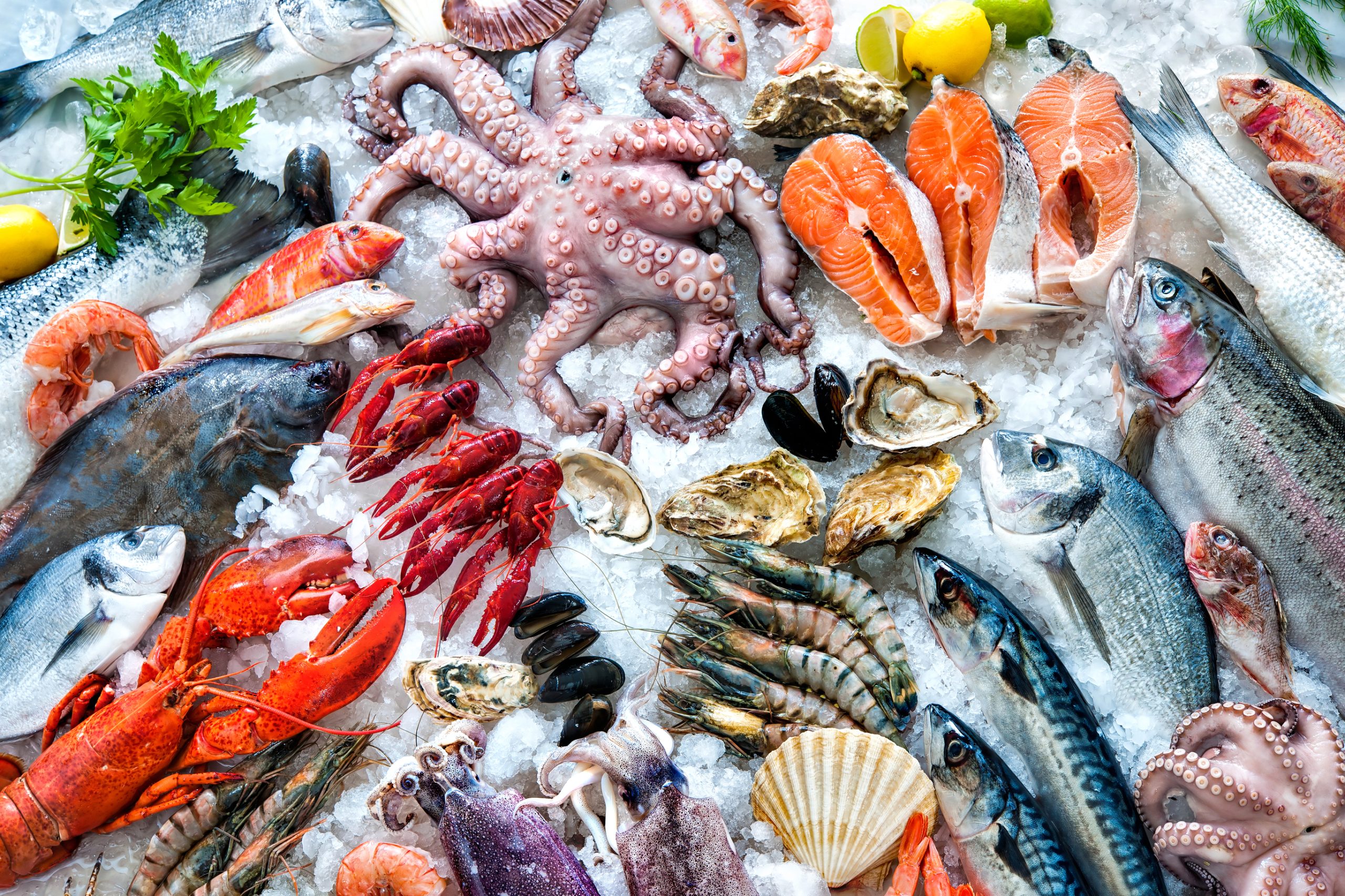
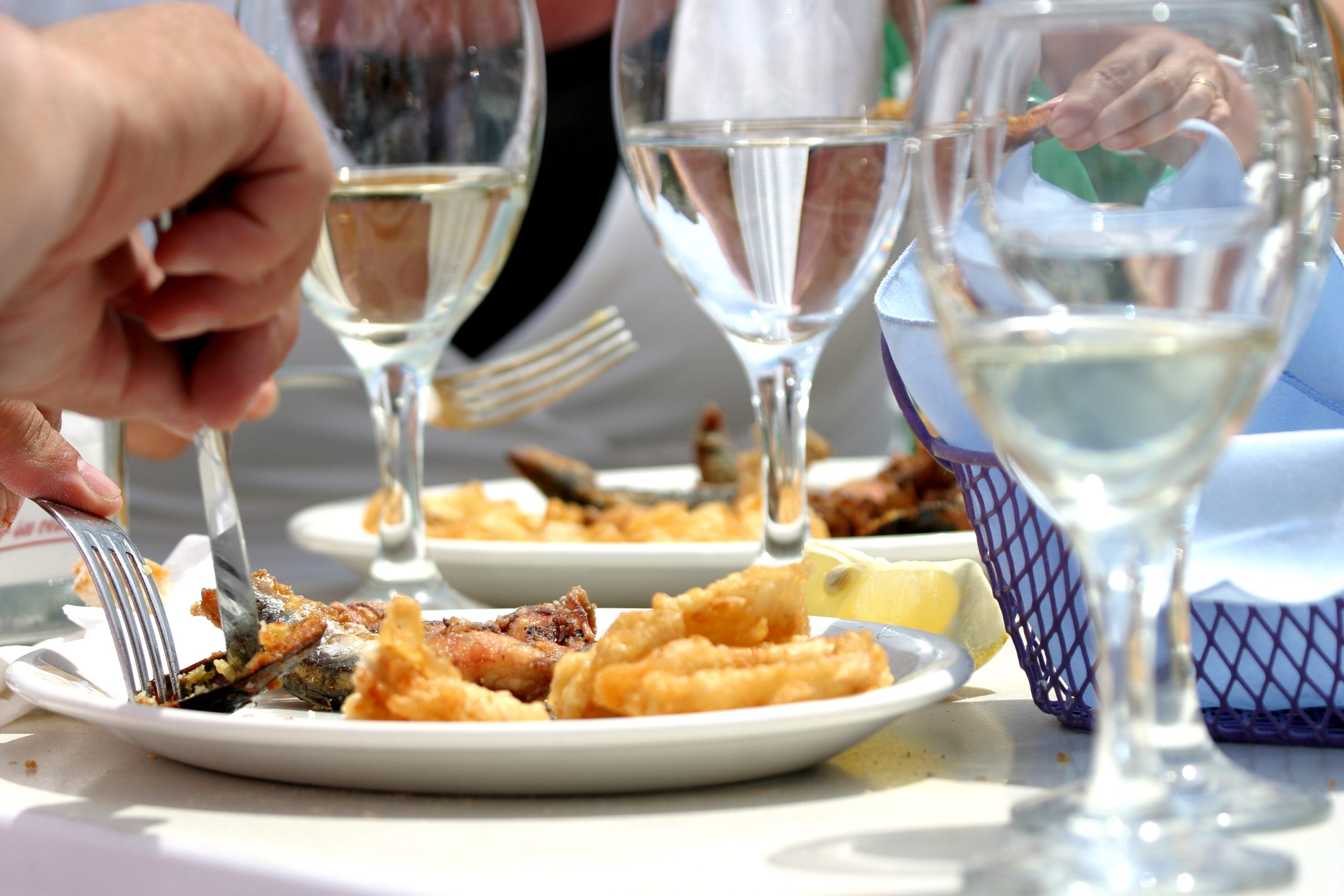
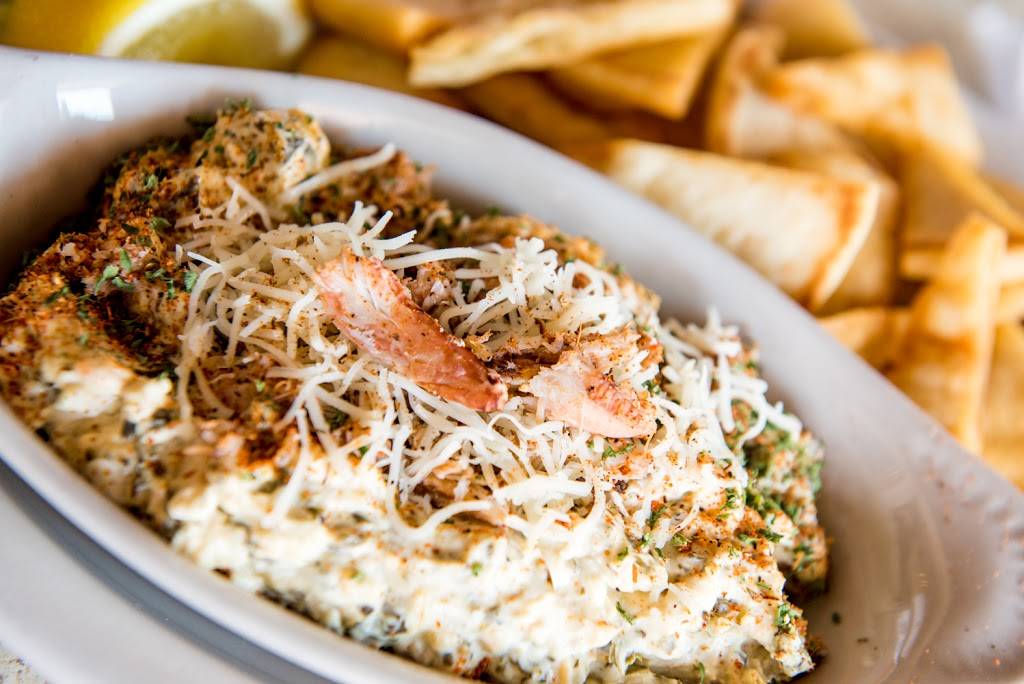
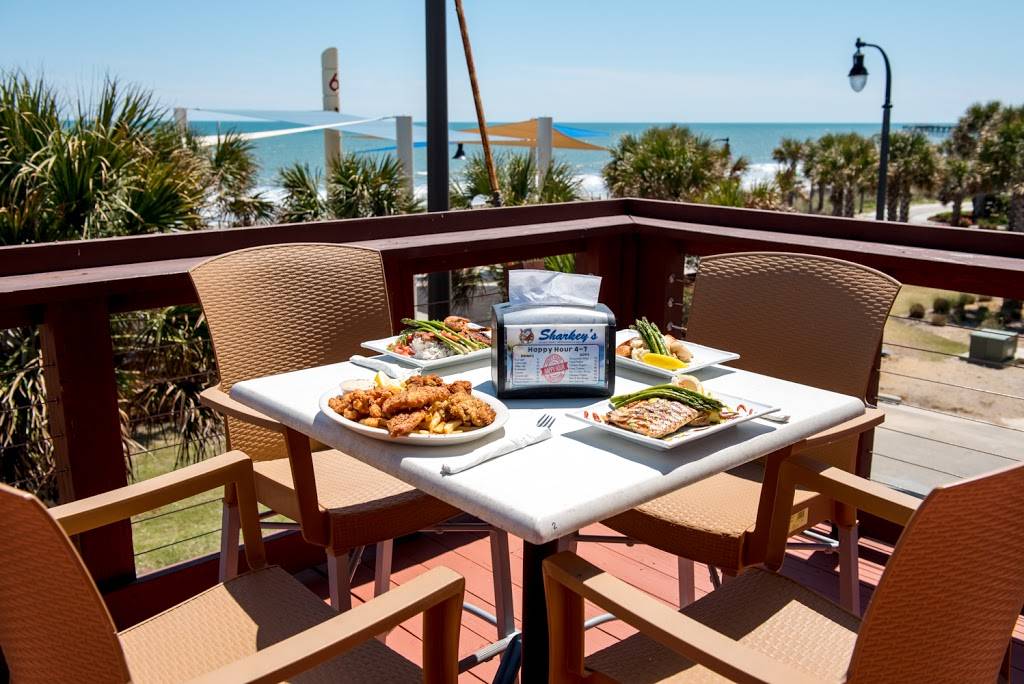

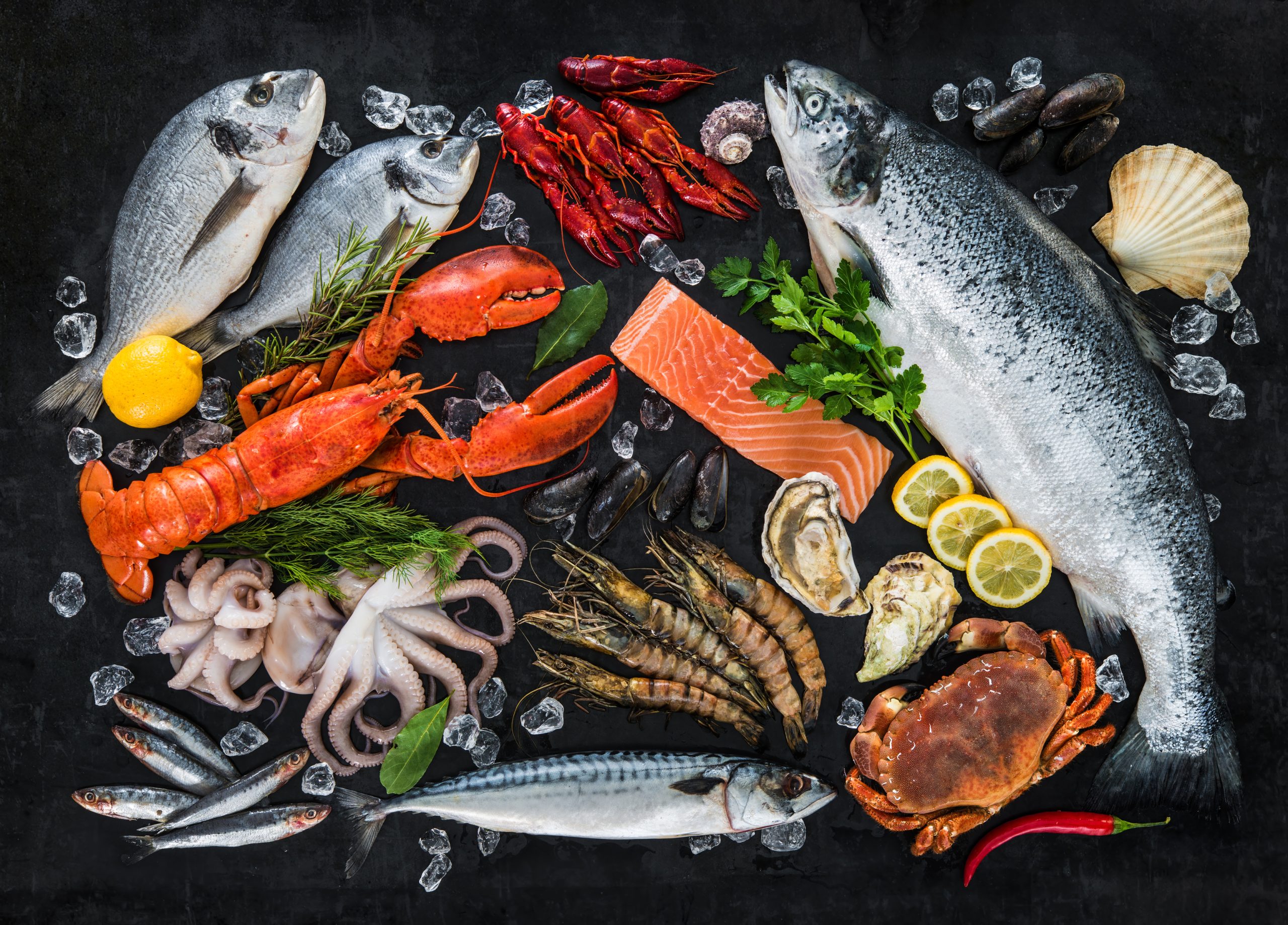
0